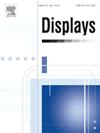多中心评估 CT 深度放射组学模型在预测非转移性透明细胞肾细胞癌的莱博维奇评分风险组别中的应用
IF 3.7
2区 工程技术
Q1 COMPUTER SCIENCE, HARDWARE & ARCHITECTURE
引用次数: 0
摘要
背景非转移性透明细胞肾细胞癌(nccRCC)术后复发和转移的风险很大,这凸显了准确术前风险评估的重要性。虽然莱博维奇评分很有效,但它依赖于术后组织病理学数据。本研究旨在评估CT放射组学和深度学习模型在预测nccRCC莱博维奇评分风险组别中的有效性,并探索CT和病理特征之间的相互关系。患者和方法本研究分析了四个数据集中的600例nccRCC患者,将其分为低风险组(莱博维奇评分为0-2分)和中高风险组(莱博维奇评分超过3分)。根据CT主观特征开发了放射学模型,根据CT图像构建了放射组学和深度学习模型。此外,还开发了一个使用放射组学和深度学习特征的深度放射组学模型,以及一个包含所有特征类型的融合模型。模型性能通过 AUC 值进行评估,而预测组间的生存差异则通过生存曲线和对数秩检验进行分析。结果在训练数据集中,选择了四个放射学特征、三个放射组学特征和十三个深度学习特征来开发预测 nccRCC 莱博维奇评分风险组别的模型。在外部验证数据集中,深度放射组学模型的AUC值分别为0.881、0.829和0.819,显示了其卓越的预测准确性。值得注意的是,通过该模型分类的患者在总生存率方面存在明显差异(所有数据集的对数秩检验 p < 0.05)。结论 CT 深度放射组学模型可精确预测 nccRCC 莱博维奇评分术前风险组别,并突出了 CT 和病理数据之间的协同效应。本文章由计算机程序翻译,如有差异,请以英文原文为准。
Multicenter evaluation of CT deep radiomics model in predicting Leibovich score risk groups for non-metastatic clear cell renal cell carcinoma
Background
Non-metastatic clear cell renal cell carcinoma (nccRCC) poses a significant risk of postoperative recurrence and metastasis, underscoring the importance of accurate preoperative risk assessment. While the Leibovich score is effective, it relies on postoperative histopathological data. This study aims to evaluate the efficacy of CT radiomics and deep learning models in predicting Leibovich score risk groups in nccRCC, and to explore the interrelationship between CT and pathological features.
Patients and Methods
This research analyzed 600 nccRCC patients from four datasets, dividing them into low (Leibovich scores of 0–2) and intermediate to high risk (Leibovich scores exceeding 3) groups. Radiological model was developed from CT subjective features, and radiomics and deep learning models were constructed from CT images. Additionally, a deep radiomics model using radiomics and deep learning features was developed, alongside a fusion model incorporating all feature types. Model performance was assessed by AUC values, while survival differences across predicted groups were analyzed using survival curves and the log-rank test. Moreover, the research investigated the interrelationship between CT and pathological features derived from whole-slide pathological images.
Results
Within the training dataset, four radiological, three radiomics, and thirteen deep learning features were selected to develop models predicting nccRCC Leibovich score risk groups. The deep radiomics model demonstrated superior predictive accuracy, evidenced by AUC values of 0.881, 0.829, and 0.819 in external validation datasets. Notably, significant differences in overall survival were observed among patients classified by this model (log-rank test p < 0.05 across all datasets). Furthermore, a correlation and complementarity were observed between CT deep radiomics features and pathological deep learning features.
Conclusions
The CT deep radiomics model precisely predicts nccRCC Leibovich score risk groups preoperatively and highlights the synergistic effect between CT and pathological data.
求助全文
通过发布文献求助,成功后即可免费获取论文全文。
去求助
来源期刊

Displays
工程技术-工程:电子与电气
CiteScore
4.60
自引率
25.60%
发文量
138
审稿时长
92 days
期刊介绍:
Displays is the international journal covering the research and development of display technology, its effective presentation and perception of information, and applications and systems including display-human interface.
Technical papers on practical developments in Displays technology provide an effective channel to promote greater understanding and cross-fertilization across the diverse disciplines of the Displays community. Original research papers solving ergonomics issues at the display-human interface advance effective presentation of information. Tutorial papers covering fundamentals intended for display technologies and human factor engineers new to the field will also occasionally featured.
 求助内容:
求助内容: 应助结果提醒方式:
应助结果提醒方式:


